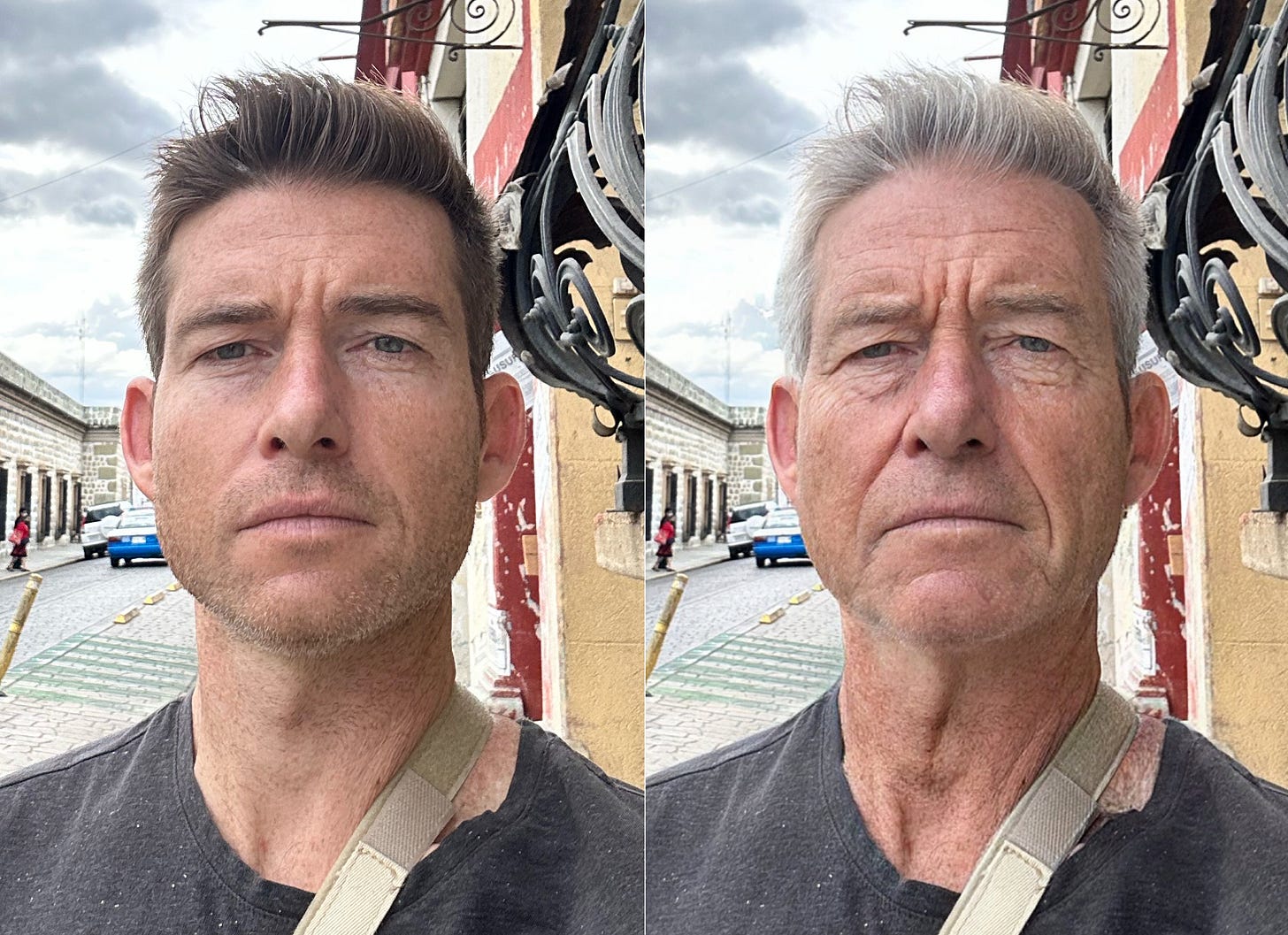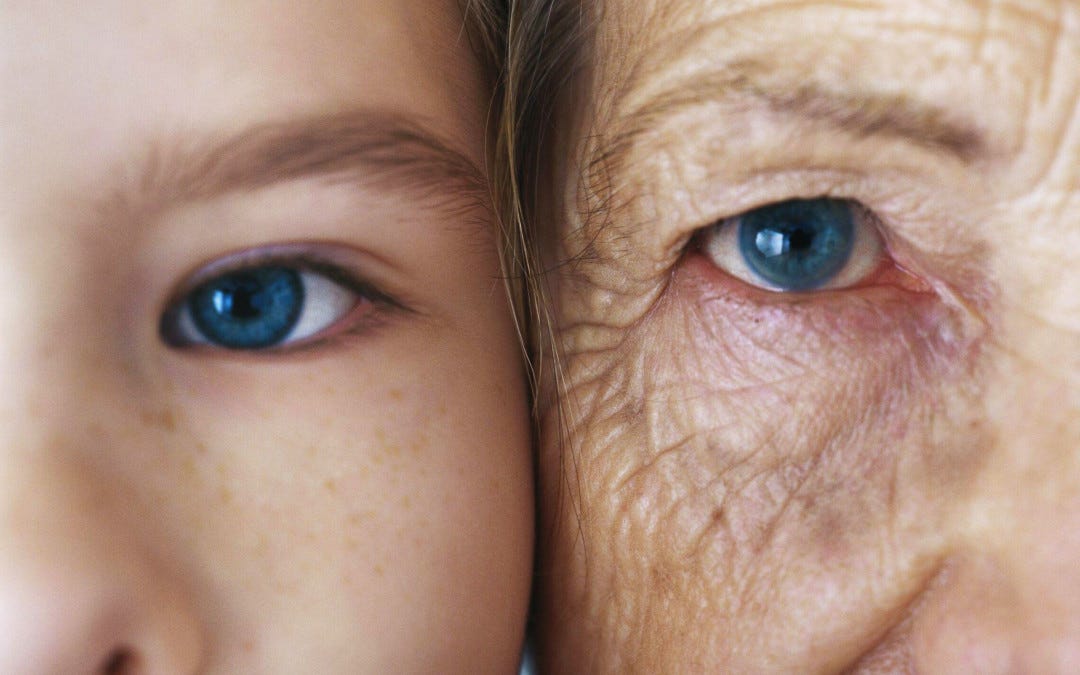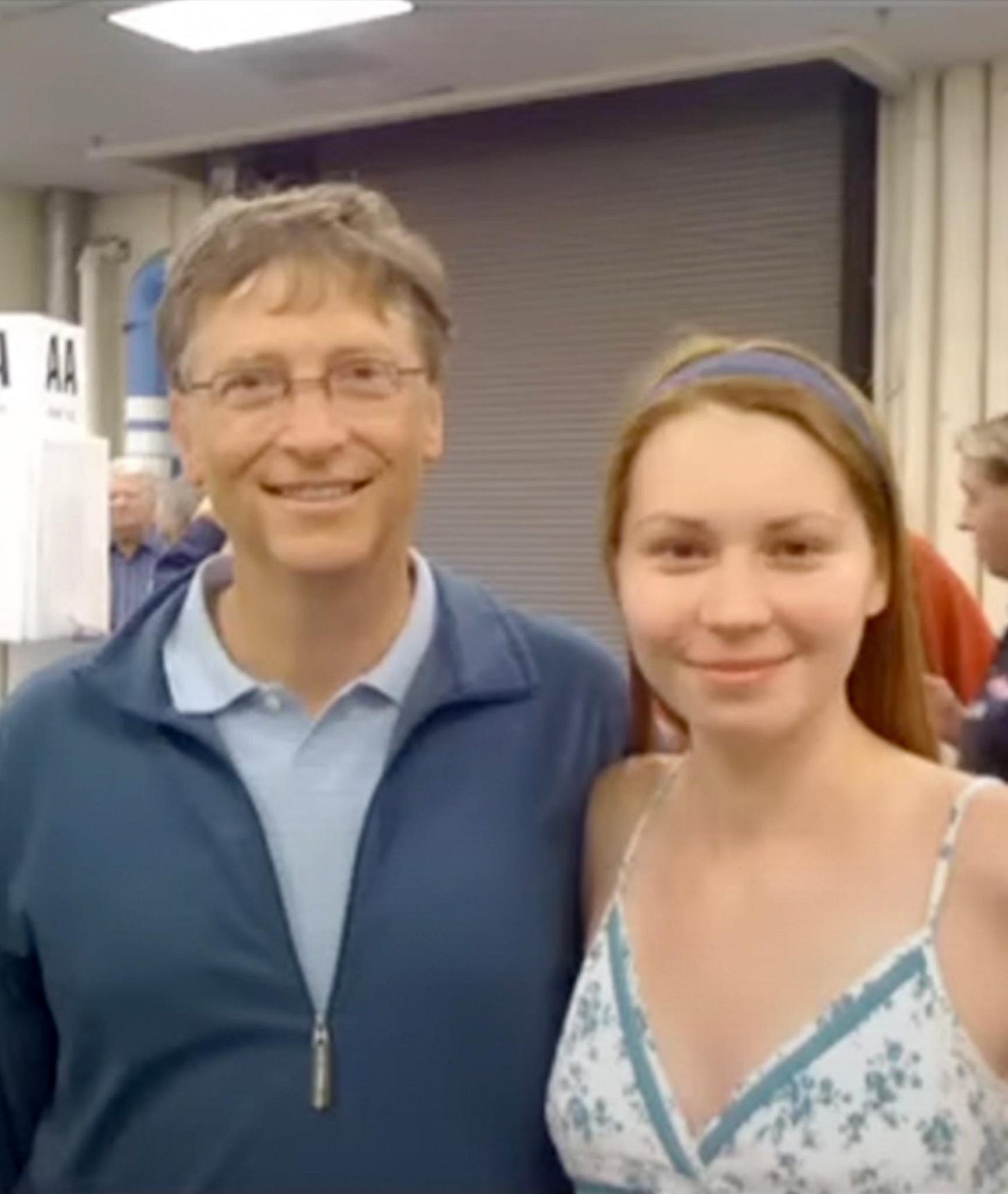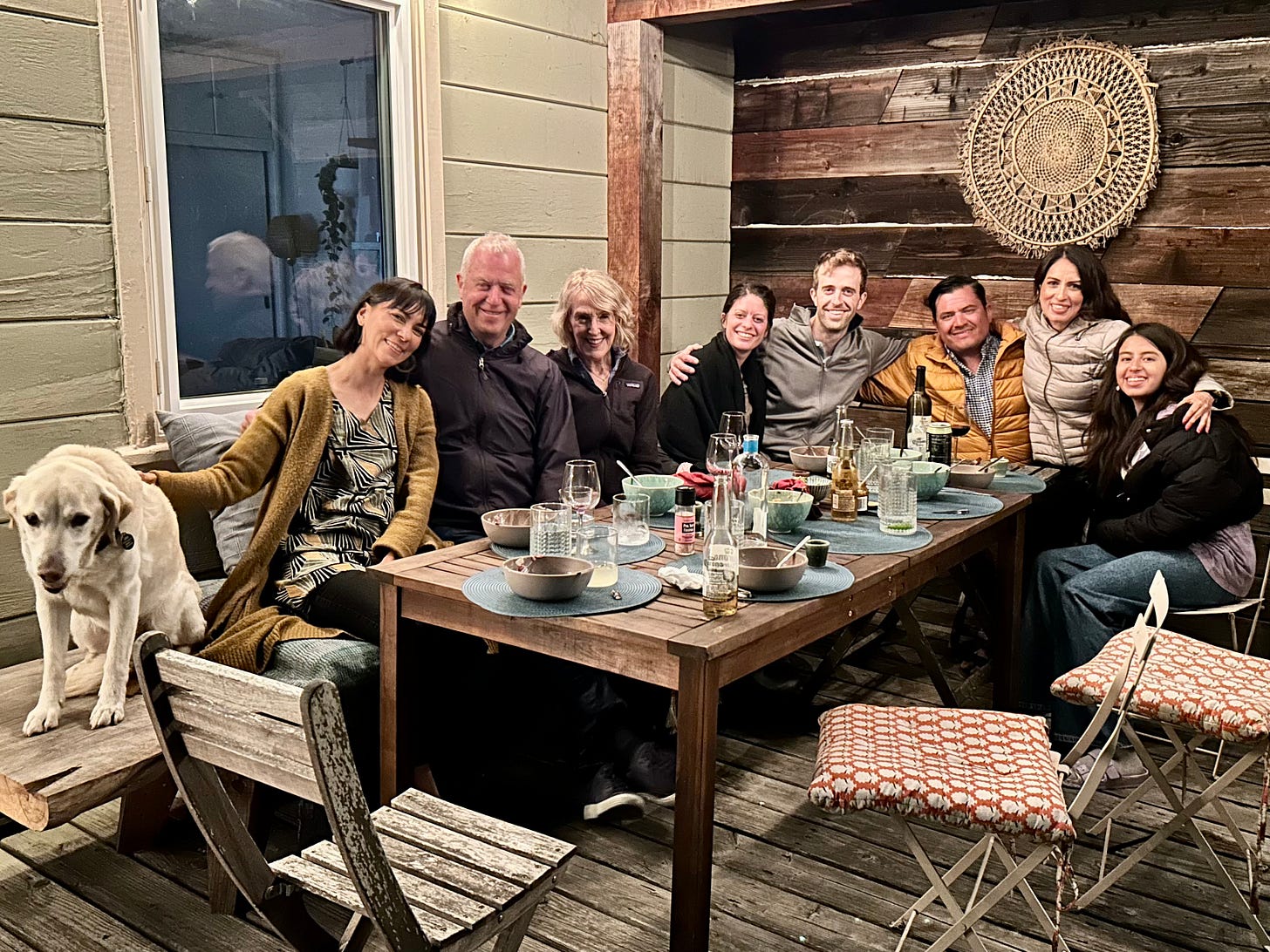This is the second of a three-part series about the onset of the Millennial midlife transition. Last week I explored whether to believe the common sense view that Millennials are too broke for a midlife crisis — and found that on average we are financially better off than our Boomer parents when they were the same age.
This week I want to focus on an aspect of the midlife transition that has stayed constant: our bodies and faces start to look and feel older. For some of us, it begins in our mid-30s. For others, it’s not until their early 50s. For Paul Rudd, it’s maybe never.
On average, though, according to a recent survey featured in the Wall Street Journal, the age of aging is:
The early 40s—specifically 42—is when the average American starts noticing physical signs of aging, including achy joints and gray hair, according to a September poll.
Whatever age it may happen to you, the point I mean to emphasize is that it will happen.
The stranger in the mirror
My entire life, I have started every day by slipping my right leg into my pants, then my left leg, and pulling up the waist around my hips. Occasionally, a foot gets stuck in a pant leg and I have to hop around a couple of times until it finds its way through the fabric tunnel to freedom. I never gave this 5-second morning routine any thought.
Until last month, when my foot got stuck causing me to hop a couple of times … and then, losing my balance, I fell onto the floor. Maybe I was especially tired that morning. Maybe I was distracted and not paying attention. But as I lay there on the floor trying to understand what the hell had just happened, more than anything, I felt old — like this was the first of many falls awaiting me over the next half-century. The first gray hair. The first permanent forehead wrinkle. The thinning hair. The first back pain. There is an abundance of physiological firsts in your early 40s.
Somewhat like a car, each organ of our body starts to decay at different points of our lifespan. (The brain at 24, the heart at 40, liver at 70.) Aging is inevitable (despite our surgical, cosmetic, and digital attempts to reverse it), but only after you start to look older do you fully experience how society attaches beauty and interestingness to youth.
The stranger in the mirror doesn’t look like how I feel. Inside I am still interesting, charismatic, and sexually alive. But the stranger staring back at me looks tired, sagging, a remnant of the past. Though vain and superficial, this mismatch between how I feel and how I look has been one of the toughest adjustments of the midlife transition.
Bill Gates wasn’t the first and won’t be the last 50-something to use his wealth and status to have an affair with someone half his age. (Nor will Al Pacino be the last 80-something to father a child with a 20-something.) A lot of men (and plenty of women) arrive to middle age with a need to prove that they are still sexually appealing to someone half their age. I am sure that deep down in our Darwinian DNA, we (especially men) link youth to fertility to sexuality. There is no reason to pretend otherwise; our culture has evolved faster than our biology.
If middle-aged men feel compelled to lie down with women half their age, middle-aged women are pressured to look half their age. Americans spent $14.6 billion on aesthetic procedures in 2021, and women made up 94% of all procedures.1 The most dangerous plastic surgery, the Brazilian butt lift, is still on the rise despite its $10,000 price tag, high mortality rate, and painful recovery.
In 2017, the online retailer Skin Store surveyed 3,000 women around the United States about how much time and money they spend on their faces. They found that the average woman spends over $300,000 on make-up and lotions during her lifetime. And then there’s the annual cost of Botox ($3,000) and, increasingly, Ozempic ($10,000). There is a fortune to be made from our midlife physical insecurity.
There is the old line, “Beauty gives women status; beautiful women give men status.” As a former fashion model in New York’s VIP party scene, sociologist Ashley Mears knows the status value of a beautiful young woman for a wealthy man.
Deep down, I don’t think that anyone is happy about this. I believe Bill Gates when he says that he genuinely regrets having an affair with a much younger woman and losing his wife. Similarly, most women don’t want to spend so much time and money and anxiety on their physical appearance as they age.2
So what can we do about it?
Stop comparing how we look today with how we looked 20 years ago. Instead, how do we want to feel 20 years in the future?
Focus more on how we feel than how we look. Confidence is still sexier than smooth skin.
Anytime, I catch myself comparing how I look now with how I looked in my 20s, I remind myself to look 20 years into the future instead of the past. How do I want to look and feel in my 60s? My whole outlook shifts. I remember to put on sunscreen in the morning. I stretch at night. I spend those 30 minutes at the gym doing core and mobility work instead of puffing up useless vanity muscles like biceps and pecs.3
My 20s and 30s have come and gone, but what about my 60s? I want to stay active, healthy, and injury-free with great sex, sleep, and digestion. And I know that my 40s is the time to lay the foundation for how I feel in my 50s and 60s.

🧰 A useful tool: Prehab and precovery
I’ve been really happy with Strava’s free companion app Recover Athletics, which syncs to your Strava activities and suggests personalized stretching, foam rolling, and mobility exercises for before and after your runs and rides.
Speaking of Strava, I’m up in Lake Tahoe for a week of remote work and evening hikes and I’ve found that Strava is now better than AllTrails for finding information about great hikes. Strava recently hosted an event to announce new features and it seems that they are investing heavily in improving the app for skiing and hiking.
As if any of us needed another reason to exercise,4 some innovative new research has “made the strongest case yet that regular exercise can improve cognition.”
Plus, you can still enjoy that glass of wine or beer in the evening. A new meta-study that analyzed 107 studies on the effect of alcohol on nearly five million people found that those of us who enjoy 1-2 drinks per day are less likely to die sooner than those who don’t drink at all.5
👏 Kudos: My cousin and soon-to-be cousin-in-law
Another part of midlife is that we stop going to bachelor parties. Or so I thought until my cousin Ian invited (challenged?) me to join (keep up with?) his buddies for a fun-packed weekend up in the mountains. (I learned more drinking games in three days than over the past 15 years!) I’m very excited for Ian and Rose’s wedding this summer in Pennsylvania (send me your Pittsburgh tips!). Here’s a pic of Ian and Rose (in the corner) with Iris’s family from a couple of weeks back.
I hope that you feel great and look like … honestly, who cares. Hugs,
David
Top procedures: Liposuction: 491,098; Breast Augmentation: 364,753; Tummy Tuck: 242,939; Breast Lift: 167,395; Eyelid: 149,668.
A friend of mine learned this lesson recently when he threw out his back trying to lift too much weight to grow his biceps.









So much resonated here, but the physical changes we experience are some of the most jarring. I still play hoops, but I am gassed so easily now. I still exercise 3-4 times a week, but every week seems to get harder. And now, my best friend in the entire world is my large foam roller I use 5-10 times a day on my back. But let me tell you, I can still knock back a bottle of wine and wake up fine the next day to make kids breakfast!